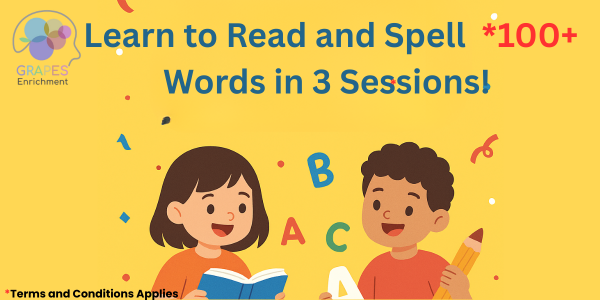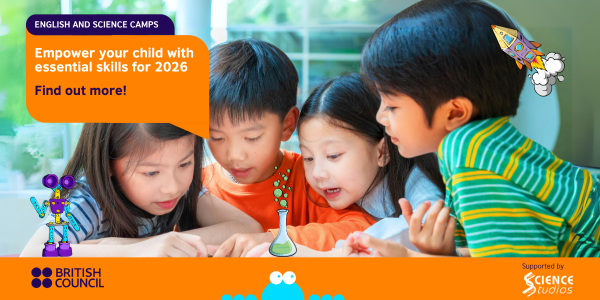Are Fairy Tales harmful to your child?
Think ‘Disney’ and the power of imagination will come to mind. Disney stories and fairy tales are most closely associated with pretty illustrations with an added kick of fantasy. Many have debated over whether such stories are indeed good for our children.
Illusory narrative and presentation
That the good always triumphs the evil, and the Prince and Princess will always live happily ever after are common narratives among fairy tales. When you grow up, you know that isn’t always true. Are we depriving our children of a chance to deal with grief and disappointment?
Fairy tales are often magical – Cinderella’s pumpkin-turned-carriage, a hen that lays golden eggs in ‘Jack and the beanstalk’, or a boy carved out from wood could come to life… Some parents resist giving their children the false impression that such things could really happen.
Another concern surrounding fairy tales is the absence of grey areas. The good and bad are as distinct as black and white. However, in reality, many situations could be cloudy. Parents are worried if their children will be moulded into thinking that the good can be easily discerned from the bad, the right from the wrong.
Violence
At times, the storyline could appear violent. For example, ‘Hansel and Gretel’ depicts cannibalism with a witch who fattens up the children lost in woods so that she can eat them, and the ‘Little Red Riding Hood’ showed cruelty to animals with the hero hunter cutting up the wolf. Such violence may have a mental impact on the immature mind or cause fear.
Stereotypical portrayal
Stereotype of the minorities is another bane of fairy tales. The good guys look good. Even if they don’t, they will magically turn into the best looking chaps, as in the case of the Frog Prince, while the villains are almost always ugly.
The good folks in the tales are usually the ones in distress and need help, as if bad guys have no share of ill luck in life. Not quite true, isn’t it?
A surreal mix of fact and fantasy
Despite these, fairy tales are fundamentally a true reflection of life, packaged in fantasy. And I feel it is worth exploring into this surreal world for the following reasons.
Just another fiction
Fairies, giants and trolls aside, fairy tales are no different from other children’s stories in which animals like cats, dogs and bears are the main protagonists. Can dogs really speak, for instance? We need to recognise that all these belong to the world of fiction and in the fictitious world, the impossible can happen regardless whether they are brought about by fairies or animals.
Cognitive development
Fairy tales help to develop your child’s cognitive skills. Exposure to the realm of ‘possibilities’ not only builds his ability to express himself freely, but also hones his creativity. Children make use of their ability to imagine, to solve problems or soothe themselves. For instance, during pretend play, your pre-schooler may pretend she is her own teacher trying to calm the crying children who are afraid of school, when she is the crying child in reality.
In critical thinking, such stories also teach the young ones how to navigate life and deal with problems, within safe perimeters. They learn from the consequences of characters’ decisions that their choices have an impact on them.
Morals and life lessons
Morals and life lessons can be taught through fairy tales. Sally Goddard Blythe, a child development expert once pointed out, “Fairy tales help to teach children an understanding of right and wrong, not through direct teaching, but through implication.”
The focus in ‘Pinocchio’ isn’t about a nose that can grow longer, but the undesirable consequences of lying. Similarly, the focus in ‘Little Red Riding Hood’ isn’t about the grandmother surviving the wolf despite being gobbled up, but the consequences of talking to strangers and trusting the wrong people.
While fairy tales always narrate unrealistically that the good will triumph the evil, the lessons learnt are easy to comprehend and one must remember simplicity is important to the young minds. Do good, not bad deeds. Be the hero, not the villain. It is precisely this absence of grey areas that could help the child clearly identify himself with the valiant and not the evil one. Your toddler needs to start from somewhere safe and nurturing, not coerced into accepting the realities of human being’s complex nature at this stage. The onus is then on parents to introduce the “wolf in disguise” at an appropriate time later on.
Cultivate positive thinking
In the world of fairy tales, the plot often develops from peace, to problems, then suspense with a glimpse of hope that the good will rid the evil. It is as important to build your kids’ emotional resilience as it is to build hope and positivity in them. Fantasy offers such an opportunity. Surely you don’t want to be a killjoy all the time, reminding them that not all princesses live with the princes happily ever after?
All that being said, before you serve that daily dose of imagination to your growing toddler,
Here are some pointers to be mindful of:
Choose a spread
Nourish them with a good balance of fairy tales and other fiction that defy the stereotype as well as non-fiction reads. Kids will not thrive on a constant diet of mere fairytales all the time. It’s better to have everything in moderation. When I borrow books from the library for my toddler, I always choose a range – fairy tales, other fiction stories that are less of a fantasy and non-fiction that guides scientific and logical thinking.
Expose but guide
What goes into your conversation or storytelling can determine how your kiddo digests the story afterward. Place emphasis on the key message you wish your child to pick up, and less on the violence and fantasy. Ask questions like “So what is the moral of the story? This tells us that…”. This will reinforce the reasoning behind the surreal presentation of fairy tales.
Cite living examples
Provide instances of real-life examples that might be relevant to the story. After the ‘Pinocchio’ story, bring on the example of a recent incident where a child lied and nobody believed him when he told the truth, resulting in some dire consequences. It’s about bringing your child back to reality.
Give it a twist
If the unrealistic endings of fairy tales make you uncomfortable, try giving the tale a new twist. For instance, instead of Jack and mother living happily ever after, you can say that they live together, sometimes happy, sometimes sad, sometimes angry and sometimes scared. If your child gets curious, explain the emotions – nobody can be happy all the time. This requires a little creativity on your part though.
Confront negative emotions
When it comes to violent or frightening scenes, try communicating with your child at a deeper level by being open and receptive to their imagination. Acknowledge the fear – I know you are frightened by the hunter cutting up the wolf. Redirect the child to think – the wolf is bad because he ate grandma, so the hunter needs to bring grandma back. Return with positive emotions – now Red Riding Hood and Grandma are both safe and happy.
With these in mind, hopefully you will not hesitate to unleash your bag of fantasy reads in future!






Give your Opinions